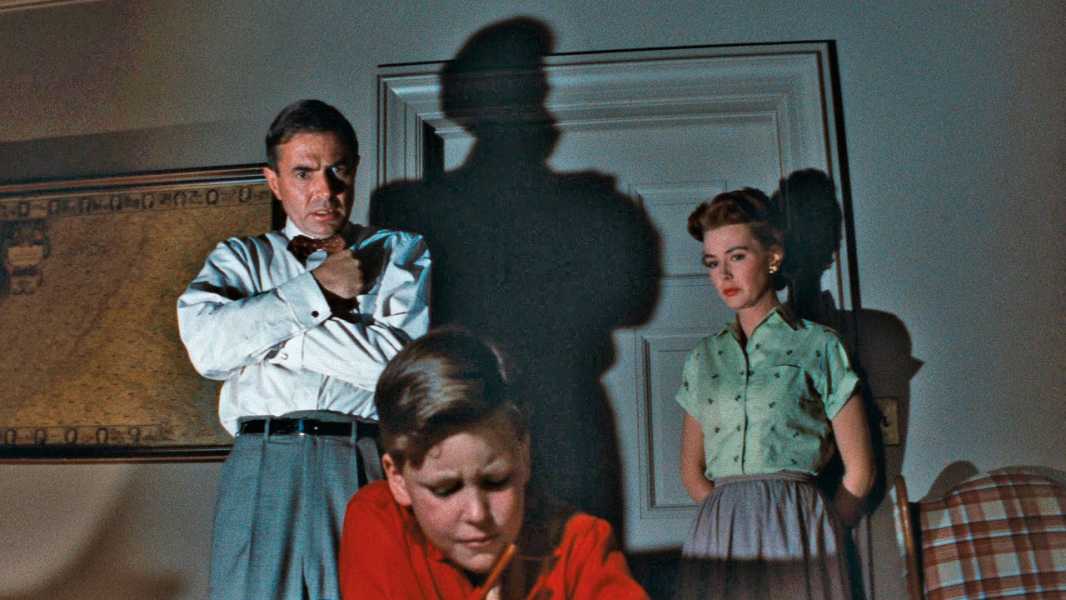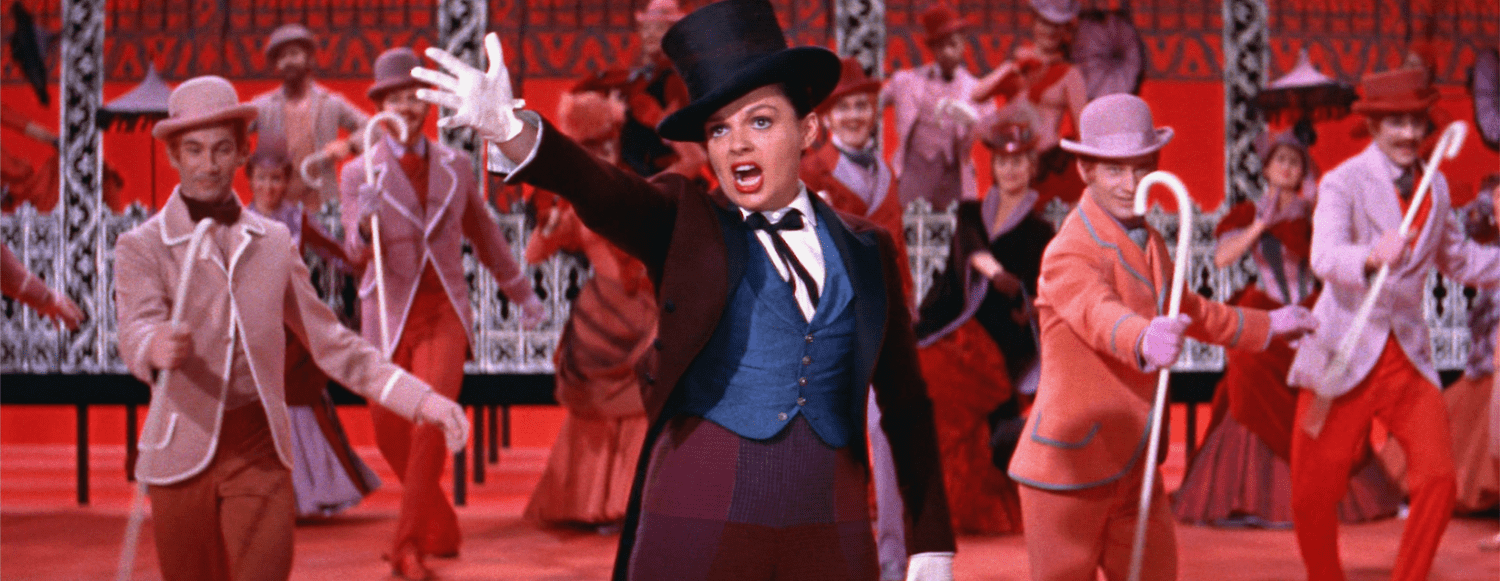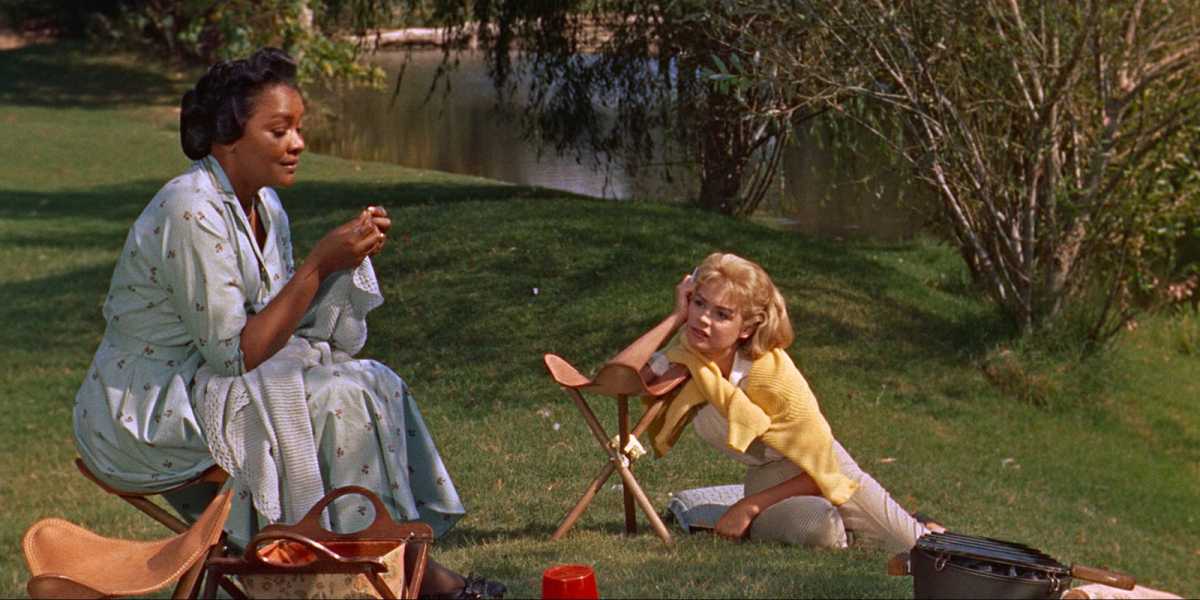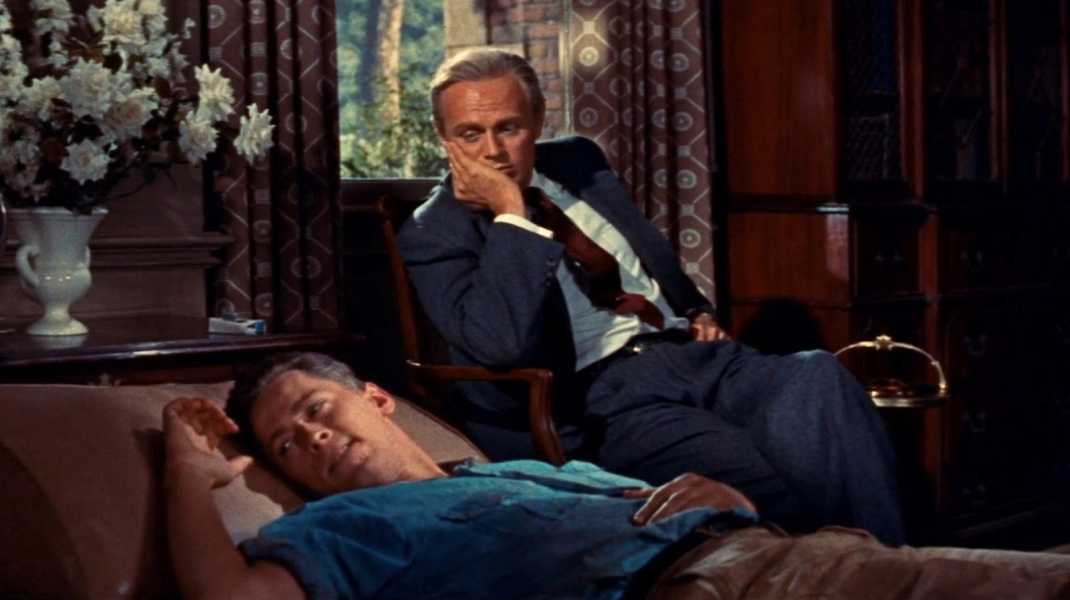
Save this storySave this storySave this storySave this story
One major virtue of the film historian Foster Hirsch’s teeming new book, “Hollywood and the Movies of the Fifties,” is to bring the output of this extraordinary decade back into the forefront of attention. (Concurrent with its publication, there is a series at Film Forum, “50 from the ’50s,” with Hirsch on hand to introduce some screenings.) Hirsch presents a panorama of the film industry at the time, anchored in the economic struggles that the studios were facing. The rise of television was drastically reducing moviegoing, and a federal antitrust suit (decided in 1948) had forced studios to divest themselves of movie theatres, a development that deprived them of guaranteed revenue. Hirsch’s account goes into fascinating detail on how studios were forced to reconsider their modes of production, the new technology they employed in doing so, and the internecine battles that these shifts entailed. He looks at the political and social conflicts that the movies confronted and the ones they skirted, the rise of a new generation of stars and the varied fates of long-established ones, and the widely varied artistry of filmmakers who found themselves working in a newly unstable system.
Hirsch writes himself into the story. Having been born in 1943, he is in a position to reminisce about his childhood and adolescent moviegoing experiences in a way that complements both his research and his critical assessments. The result is a kind of firsthand sociology, in which moviegoing is treated as an experience, of which the movie itself is only a part. He also considers how his views of movies of the fifties have changed since then, and the way in which that shift of perspective inescapably, though often tacitly, shapes his narrative of how the decade unfolded. He discusses the wider culture of the time, finding in fifties America “the seeds of the counterculture revolution that erupted in the late 1960s,” with movies as a vital part of that trend.
“The American film industry in the dying days of the studio system adopted a go-for-broke, let’s-try-anything approach,” Hirsch writes, noting that this yielded some strange masterworks and a “portfolio of dark genres” that is “notably robust.” He praises many good and often overlooked films—including Robert Aldrich’s “Autumn Leaves,” Joseph H. Lewis’s “Terror in a Texas Town,” and Vincente Minnelli’s “The Cobweb”—and explores idiosyncratic genres, such as ancient-world epics and low-budget sci-fi. When Hirsch is passionate about a movie, such as Douglas Sirk’s “Imitation of Life,” his fervor is matched by eloquence and an eye for detail. Indeed, his chapter on melodramas, with its long discussion of Sirk’s extraordinary run of them, is the most moving part of the book. Hirsch notes that Sirk’s films “were generally derided as kitschy soap operas aimed at gullible female spectators in the mood for a good cry. Although the films were box-office successes, they earned little or no critical respect; in the decades since their original release, however, the Sirk melodramas have undergone the greatest critical revaluation of any golden-age fare.” (Maybe, but I think the revaluation that has propelled Alfred Hitchcock’s “Vertigo” to the title of the best film of all time might be even more drastic.)

Judy Garland in “A Star Is Born.”
Hirsch rightly foregrounds the essentially countercultural power of nineteen-fifties movies and their enduring influence. But something is missing from the thesis; namely, a consideration of the personalities of the artists whose work has been reëvaluated and canonized—that is to say, directors. Hirsch is a writer of two minds. He’s no stranger to the art of directing; he has written a good book about Otto Preminger. But, in “Hollywood and the Movies of the Fifties,” the sense of directors as expressive artists is diluted amid a historicist account of industry developments, technological advances, and economic and political history. Emphasizing the careers and box-office fortunes of stars, Hirsch discusses Nicholas Ray’s Western “Johnny Guitar” as a Joan Crawford film, Ray’s inside-Hollywood drama “In a Lonely Place” as a Humphrey Bogart film, and Ray’s teen drama “Rebel Without a Cause” as a James Dean vehicle. But he pays little regard to what makes all three of them Nicholas Ray movies. (Ray’s hectic medical melodrama “Bigger Than Life” is mentioned with no reference to Ray at all.) Though there is praise for directors such as Aldrich, Minnelli, and Frank Tashlin, it usually appears fleetingly, in discussion of whatever films are germane to the historical topic at hand. He does the same with George Cukor, and gives short shrift to his direction of the furious 1954 remake “A Star Is Born.” Even with the most eminent Hollywood figures—Alfred Hitchcock, Howard Hawks, and John Ford—discussion of their films is dispersed, their art never considered in its unity. As for Jacques Tourneur, one of Hollywood’s most distinctive stylists and politically confrontational directors of the fifties, he’s not mentioned at all.
It’s not that Hirsch is indifferent to good directorial work. He enthuses about Allan Dwan’s ferocious political Western “Silver Lode,” Ida Lupino’s romantic melodrama “The Bigamist,” and Hawks’s much-maligned period spectacle “Land of the Pharaohs.” But he doesn’t put these careers, or his own appreciation of them, into historical perspective. Though he exults in the eventual revaluation of Sirk, he doesn’t point out that similar belated critical adulation came to Dwan, Minnelli, and a slew of other studio directors. For instance, “Silver Lode,” at the time of its release, in 1954, was brazenly mocked in the Times as “a meaningless sort of charade” that “will probably inspire the kiddies to buy more caps for their six-shooters for a while.” “Johnny Guitar” came in for misogynistic derision in this magazine. As for “Vertigo,” Time magazine called it, at the time of its release, a “Hitchcock-and-bull story in which the mystery is not so much who done it as who cares.”
An examination of why films and filmmakers derided or overlooked in their time are celebrated now—by Hirsch and by cinephiles at large—is an essential element of any assessment of Hollywood’s nineteen-fifties output. But this long-term, large-scale reconsideration remains unacknowledged in his book. Even as Hirsch alludes to his own changing appraisals of movies, there’s a critical shift that he leaves out concerning the way that movies are now appreciated and discussed, the way that new canons and pantheons among them are formed. It’s a shift that has its roots in the very movies Hirsch is discussing, and which conspicuously shapes his choice of films to discuss and his mode of discussing them. For that matter, it’s what creates demand for a book such as this one—a book about Hollywood in the fifties that is not a specialist monograph or nostalgic wallow but a wide-ranging critical history that can uncontroversially celebrate the best of these movies as key works of modern art.

Juanita Moore and Sandra Dee in “Imitation of Life.”
Something tectonic was happening in fifties Hollywood, but it was nearly undetectable up close; most American critics couldn’t see the trees for the forest, missed the mighty art of individual films and filmmakers because of their inextricable Hollywood roots. A decade ago, I threw together a casual cornucopia of great fifties Hollywood directors; if I were doing it again today, in light of subsequent viewings, I might need two cornucopias. The fifties was a golden age of daring and original direction—but it was also largely unrecognized, in part, because of historical trends that Hirsch details. Intellectual disdain for Hollywood remained high, for a variety of reasons. There was the spinelessness of studios during the McCarthy era—the alacrity with which, caving to pressure from Congress and right-wing groups, they went about blacklisting politically suspect writers, directors, and actors. There was an increase in technology-fuelled spectacle—part of a frenzied effort to compete with television—with such gewgaws as 3-D, various wide-screen formats, and stereo sound. No new technique is intrinsically dubious and each is a potential boon to artists, but, at the time, the hasty and ballyhooed deployment reeked of brazen commercialism. The result was that Hollywood sold its gems as costume jewelry, not through mercenary cynicism but because the studio potentates were no more aware of the enduring art being produced under their aegis than were critics or, for that matter, viewers.
Against this background, there was a remarkable liberation of directors in Hollywood. The phenomenon was partly industrial, a result of the weakening of the studio system and the corresponding rise of independent producers. It was partly migrational; the rise of Hitler and the Second World War had brought an influx of great European filmmakers (including Sirk). And it was partly the legacy of Orson Welles, who, for all the troubles he experienced in Hollywood, had definitively proved, with “Citizen Kane,” that a studio director—and a twenty-five-year-old one to boot—needn’t be any less of a key artist of his time, and needn’t yield to creators in any other field in regard to comprehensive originality. (Since Welles did little in Hollywood in the fifties, he’s only a bit player in Hirsch’s book.) In the best Hollywood movies of the fifties, there’s a fury, a wildness, a violence (sometimes physical, principally emotional), a sense of resistance to a stifling or menacing order, a sympathy with the free spirit of youth and a view of its subjection to oppressive norms. (For instance, Ray and Minnelli are among the great cinematic poets of frightened children and desperate youths.) Just as pop music in the fifties was being roiled by Chuck Berry, Little Richard, Elvis Presley, and other fervent musicians of youth in revolt, so Hollywood was also in the grips of a youth rebellion—albeit not the one that one immediately thinks of. Of course, young stars such as James Dean and Natalie Wood did capture audiences’ imaginations, but more enduringly important was the work of directors—whether relative newcomers who’d started their careers in the wake of Welles’s or veterans well into middle age who were suddenly enjoying a cinematic second youth.
Why didn’t American critics of the time see this? (The title of Pauline Kael’s bitter 1956 essay “Movies, the Desperate Art” could stand in for much received opinion at the time.) The failure to recognize the greatness that was in the air was a failure of psychology, of imaginative sympathy—not with characters in the movies but with the character of the directors responsible for the movies themselves. And it took outsiders, seeing American movies far from the collective clamor of Hollywood—not just the place but the idea, the symbol—to discern the flourishing of artistry and the vigorous rejuvenation that powered it. These outsiders were a new generation of critics who, inspired by Welles, understood the art of the director to be the art of youth and of the times. They wanted to make movies themselves and watched movies thinking like directors. They felt and lived movies as if from behind the screen; they understood what their mentors, role models, and future peers were doing, precisely because they saw them not as cogs in a system or as craftspeople in a commercial guild, but as fellow-artists. They understood more about movies than the meaning of images and the shaping of dramas; they experienced movies holistically, ethically, even metaphysically, grasping the gestalt of a film (images, text, tone, performance) as the reflection of the directors’ inner worlds.
It happened that these critics were French, working and living in Paris, congregating at the journal Cahiers du Cinéma (founded in 1951), and watching movies at the Cinémathèque Française. They were young—the eldest, Éric Rohmer, was born in 1920; the rest, such as François Truffaut, Jacques Rivette, and Jean-Luc Godard—were approximately a decade younger, and had started publishing criticism around the age of twenty. What they saw in Hollywood was an artistic youth, a youth younger than any they saw in the literature or the painting of the time. No matter that many of their favorite directors—such as Hawks, Hitchcock, and Fritz Lang—had been born in the nineteenth century; the image of Welles making “Citizen Kane” at twenty-five clinched, for them, the notion of American cinema as the youthful force they wished to emulate. When they started to make their own movies, their own cinema of youth, in the late fifties and early sixties, they borrowed, channelled, and transformed the styles, forms, and moods of recent Hollywood movies. The Hollywood fifties gave rise to their movement—the French New Wave—as surely as the rise of American rock and roll, in the fifties, gave rise to the British Invasion.

A still from “The Cobweb.”
The critic-directors of the New Wave, by so conspicuously establishing their fealty to these modern classics, sparked a new interest—and a new kind of interest—in them back in the United States. The artistic originality and the success of New Wave films validated the tastes and tenets of the movement; suddenly, viewers and critics who loved “foreign” films had to pay serious attention to Hollywood works as those more explicitly artistic movies’ equals. New Wave filmmakers created a new mainstream of Hollywood classics, based on their enthusiasm for particular directors, that owed nothing to Oscars or popularity. The New Wave filmmakers discerned, extracted, and developed those aspects of recent American movies that seethed and thrummed with the spirit of youth in order to create their own cinema of actual and manifest youth. In so doing, they definitively enshrined cinema as an art of youth, a central value of young people not only as audience members but as potential creators. Just the way that they might plug in and start a band, so, too, they might aspire to make a movie.
The analogy is imperfect. The young French critics were also inspired by such French filmmakers as Jean Renoir, Robert Bresson, and Jean Cocteau; by an international batch of directors that included Roberto Rossellini, Ingmar Bergman, Kenji Mizoguchi, and Max Ophuls; and by the directors of classic silent films, such as D. W. Griffith, Sergei Eisenstein, and F. W. Murnau. Still, not for nothing was this generation of French critics collectively nicknamed the Hitchcocko-Hawksians. Where others saw journeyman directors toiling away in the Hollywood system, the Hitchcocko-Hawksians saw true artistic fire. Their writings put Hitchcock and Hawks on the map, not to mention Sirk, Ray, Preminger, Minnelli, Aldrich, and others.
These French critic-directors are the hidden figures behind the very existence of books such as Hirsch’s. Moreover, in transforming how studio filmmakers’ art was regarded, they were able to distill its essence into a low-budget, even D.I.Y. practice, opening up an artistic pipeline between hands-on independent filmmaking and the industry at large. The transformations in the art and the business of Hollywood in the nineteen-sixties and beyond could not have occurred without the ferocious artistry of Hollywood’s nineteen-fifties directors—and the crucial catalyst that unleashed their latent countercultural force is French. ♦
Sourse: newyorker.com